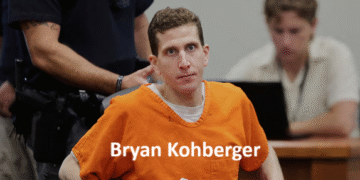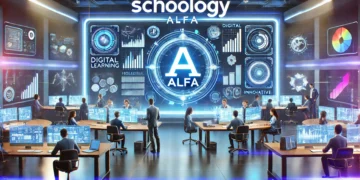The fast-food industry operates at breakneck speed, with millions of customers served daily across thousands of locations worldwide. Recently, revelations from McDonald’s employees have sparked conversations about customer service dynamics, particularly regarding how workers respond to customer greetings. Understanding the reality behind these interactions provides valuable insight into the complex world of fast-food service.
The Reality Behind Drive-Thru Operations
In many cases, employees are tasked with juggling multiple responsibilities, often leading to moments where they might not acknowledge a greeting. The drive-thru environment at McDonald’s is a high-pressure, multitasking workspace where employees must simultaneously take orders, prepare food, handle payments, and manage multiple customer interactions.
Workers often operate under strict time constraints, with management tracking service times down to the second. Each employee typically handles several roles during busy periods, from operating cash registers to coordinating with kitchen staff. This operational intensity can create situations where immediate responses to customer greetings become secondary to maintaining service flow.
The technology systems used in drive-thru operations include headsets, order screens, and timing systems that constantly provide updates and alerts. These technological demands require workers to divide their attention between multiple inputs, sometimes making it challenging to provide the personalized attention customers expect.
Understanding Employee Perspectives on Customer Interactions

A McDonald’s employee has taken to TikTok to share a common drive-thru customer behaviour that some of her colleagues find really annoying – and it’s all to do with a greeting and workers have described certain customer behaviors as potentially disruptive to their workflow.
The timing of customer greetings plays a crucial role in how they’re received. Employees receive audio alerts when vehicles arrive at the drive-thru speaker, and immediate greetings can interfere with their preparation process. Workers need a moment to pull up order systems, check with kitchen staff about wait times, and mentally prepare for the interaction.
Many employees report feeling overwhelmed when customers begin speaking immediately upon arrival, as they’re often still completing tasks from previous orders. This isn’t about rudeness but rather about the operational realities of managing multiple responsibilities simultaneously. The human element in fast-food service involves real people trying to balance efficiency with courtesy under significant time pressure.
The Multitasking Challenge in Fast-Food Service
In March 2015, McDonald’s workers in 19 U.S. cities filed 28 health and safety complaints with the U.S. Occupational Safety and Health Administration, which allege that low staffing, lack of protective gear, poor training, and pressure to work fast resulted in injuries. This context illustrates the demanding environment in which these interactions occur.
Modern McDonald’s employees often work with reduced staffing levels, meaning each person covers multiple stations. A single worker might be responsible for taking drive-thru orders, preparing beverages, coordinating with the kitchen, and handling payment processing. This reality creates cognitive load that can impact their ability to engage in extended pleasantries.
The pressure to maintain fast service times means employees must prioritize efficiency over extended social interaction. Management systems track various metrics, including order accuracy, service speed, and customer satisfaction, creating a complex balancing act for workers who want to be friendly while meeting performance expectations.
Training programs focus heavily on operational efficiency, with customer interaction protocols designed around speed and accuracy rather than extended conversation. This systematic approach, while effective for business operations, can sometimes create distance between workers and customers.
Communication Dynamics and Timing

The revelation about customer greetings highlights important timing considerations in service interactions. This annoyance at people merely greeting is due to the alert sound staff receive when a car arrives at the intercom. The technical aspects of drive-thru operations create specific communication windows that work best for both parties.
Effective communication in fast-food environments requires understanding the operational flow. Customers who allow a brief moment for workers to prepare often receive more attentive service than those who begin speaking immediately. This isn’t about workers being unfriendly, but rather about optimizing the interaction for everyone involved.
The headset systems used by drive-thru workers can create audio confusion when multiple inputs occur simultaneously. Customer greetings that overlap with system alerts or kitchen communications can make it difficult for workers to process information clearly, potentially leading to order errors or miscommunication.
Professional customer service in high-volume environments requires balancing warmth with efficiency. Workers often develop strategies for managing interactions that allow them to be courteous while maintaining the pace necessary for successful operations.
The Broader Context of Fast-Food Employment
Understanding why some McDonald’s workers might not immediately respond to greetings requires considering the broader employment context. Fast-food work often involves young employees learning professional skills while managing academic or personal responsibilities. The job serves as an entry point into the workforce for many, providing valuable experience in customer service, time management, and teamwork.
Late-night hours, lack of training, and a lack of adequate hazard controls—combined with hundreds of reported violent incidents, and worker accounts of violence demonstrate additional challenges these employees face. The work environment can be stressful, with workers handling difficult customers, managing safety concerns, and maintaining composure under pressure.
Employee retention in fast-food positions can be challenging, leading to frequent staff turnover and ongoing training needs. New employees may not yet have developed the confidence or skills to manage complex customer interactions while performing their operational duties effectively.
The compensation structure in fast-food work often means employees are motivated by different factors than in higher-paid service positions. While professional courtesy remains important, the economic realities of the job can influence how workers prioritize their time and energy.
Building Better Customer-Worker Relationships

Despite operational challenges, there are ways customers can contribute to more positive interactions with McDonald’s workers. Understanding the demands of the job helps customers approach these interactions with appropriate expectations and timing.
Allowing workers a moment to prepare before speaking helps create smoother interactions. This brief pause gives employees time to access order systems, check on previous orders, and mentally shift focus to the new customer. Simple courtesy, such as waiting for the worker to acknowledge your presence, can significantly improve the interaction quality.
Patience during busy periods helps workers manage stress and maintain service quality. Customers who remain calm and understanding when delays occur often receive better service and create a more positive environment for everyone involved.
Recognition that fast-food workers are managing multiple complex tasks simultaneously can lead to more realistic expectations about interaction style and response time. These employees are professionals doing demanding work, and treating them with respect creates better experiences for all parties.
Conclusion
The revelation that McDonald’s workers reveals customers who greet them may be ignored reflects the complex realities of modern fast-food service rather than intentional rudeness. Understanding the operational demands, technological systems, and human factors involved in these interactions helps both customers and workers create more positive experiences.
Effective customer service in high-volume environments requires balancing efficiency with courtesy, and both parties play a role in successful interactions. By recognizing the challenges faced by fast-food workers and adjusting expectations accordingly, customers can contribute to more pleasant and effective service encounters.
The fast-food industry continues evolving, with technology and operational improvements aimed at better serving customers while supporting employee success. These ongoing changes will likely influence how customer-worker interactions develop in the future, potentially creating more opportunities for positive engagement within the constraints of efficient service delivery.
(FAQs) About McDonald’s Workers reveals customers who greet them may be ignored
Q1 Why do McDonald’s workers sometimes not respond immediately to customer greetings?
A: McDonald’s employees often juggle multiple responsibilities simultaneously, including managing order systems, coordinating with kitchen staff, and handling technological alerts. The timing of customer greetings can interfere with these operational tasks, making immediate responses challenging rather than intentionally rude.
Q2 Is it rude for customers to greet McDonald’s workers right away at the drive-thru?
A: While greeting workers isn’t inherently rude, the timing matters significantly. Workers receive audio alerts when cars arrive and need a moment to prepare their systems and mentally transition to the new customer. Allowing a brief pause often results in better service interactions.
Q3 What challenges do McDonald’s employees face that might affect customer service?
A: McDonald’s workers often deal with understaffing, pressure to maintain fast service times, multiple simultaneous tasks, technological system management, and sometimes difficult working conditions. These factors can impact their ability to provide extensive personal interaction while maintaining operational efficiency.
Q4 How can customers improve their interactions with McDonald’s workers?
A: Customers can help by allowing workers a moment to prepare before speaking, showing patience during busy periods, understanding the complexity of their jobs, and treating employees with respect and courtesy. These approaches often lead to better service experiences for everyone.
Q5 Are McDonald’s workers trained to ignore customer greetings?
A: No, McDonald’s workers are not trained to ignore customers. However, their training focuses heavily on operational efficiency and speed, which can sometimes create challenges in balancing courtesy with performance requirements. Any apparent ignoring is typically due to operational demands rather than company policy or personal rudeness.
For More Information Visit Bratish Magazine

















































































